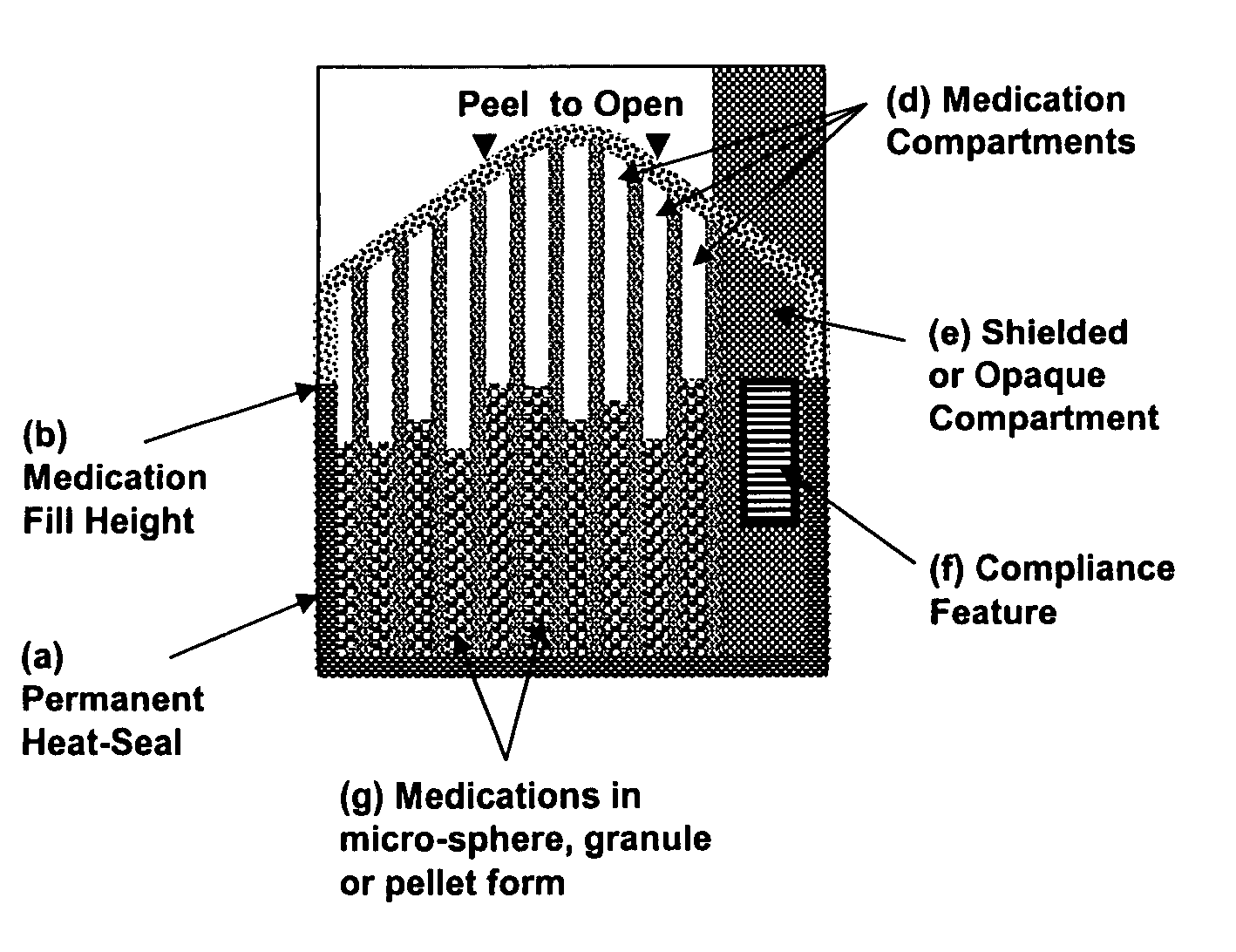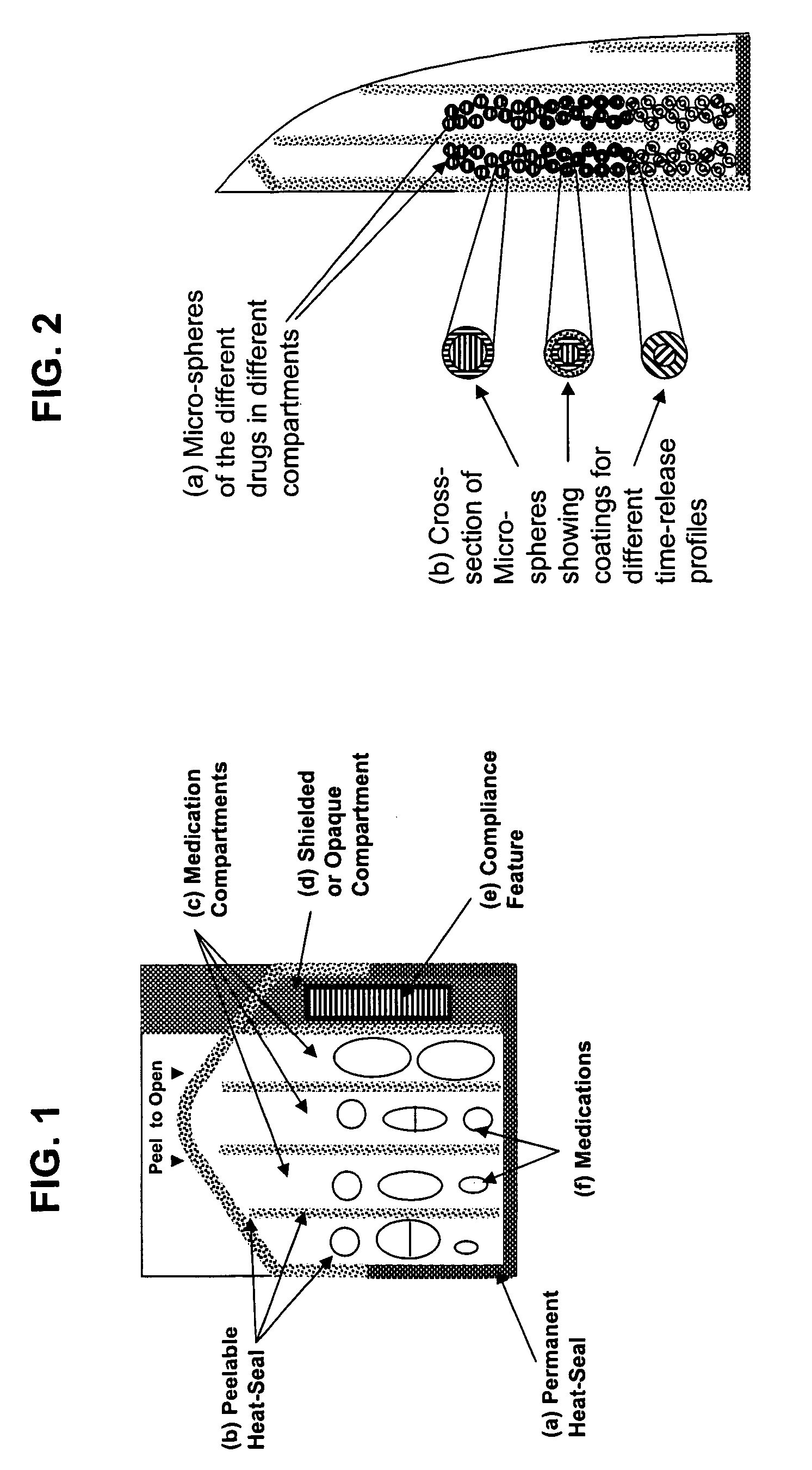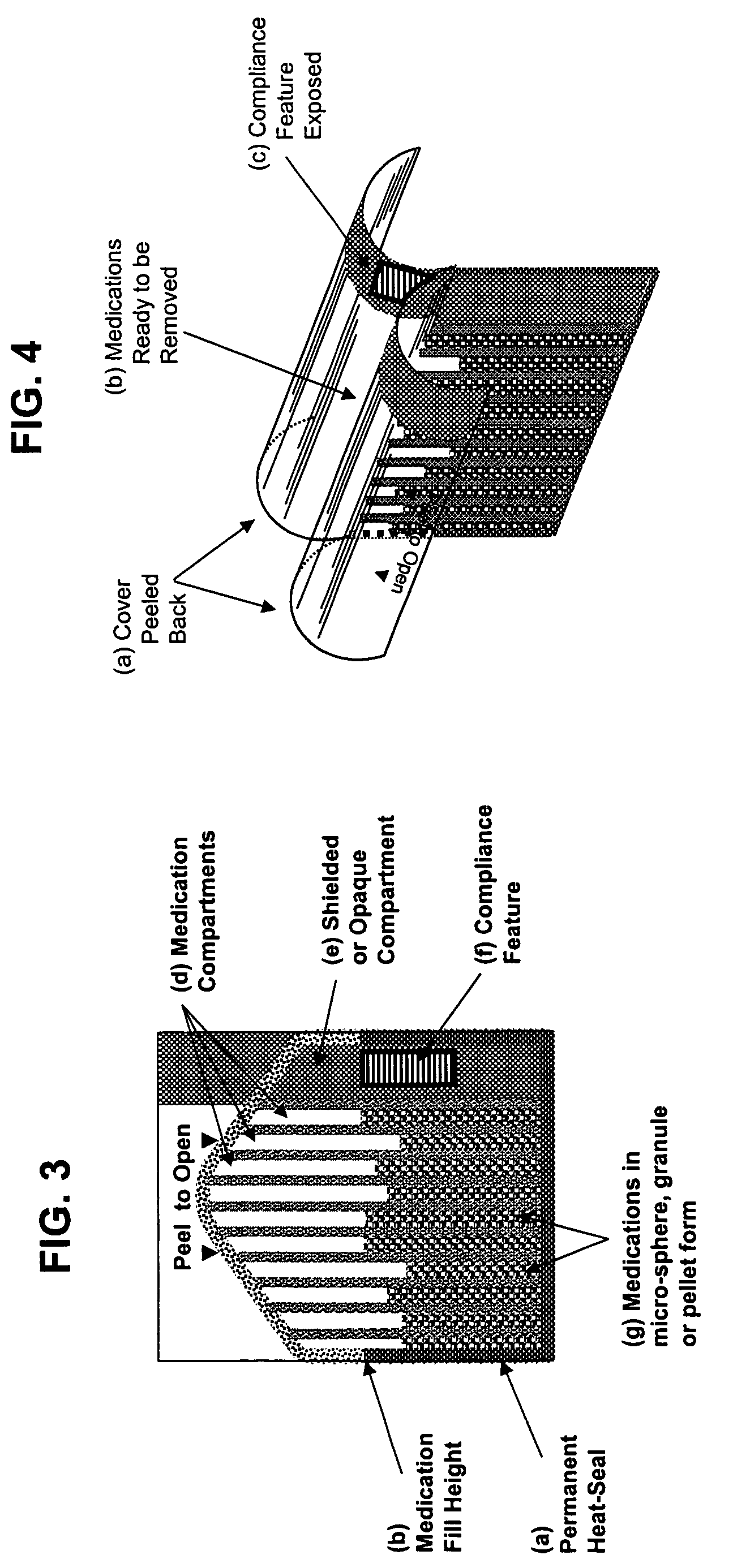Unified ingestion package and process for patient compliance with prescribed medication regimen
a medication regimen and ingestion package technology, applied in the field of medication regimens, can solve the problems of patients forgetting to take the medication, suffering the symptoms of under-dosing or over-dosing, and inconvenience of lack of complian
- Summary
- Abstract
- Description
- Claims
- Application Information
AI Technical Summary
Problems solved by technology
Method used
Image
Examples
Embodiment Construction
Overview
[0018]Techniques and systems are described hereafter for reducing non-compliance by (1) reminding patients to take their medicines at the appropriate times, (2) simplifying the taking of medicines through personalized and convenient multi-dose packaging, (3) incorporating features in the packaging to enable the monitoring of patient compliance events, (4) monitoring and recording patient compliance events in a database, (5) analyzing the database to guide interventions to improve patient compliance, (6) analyzing the actual consumption of the medications to (a) automatically refill and deliver a labeled multi-day (15, 30 or 90 days) supply of medication packages to patients, and (b) more accurately forecast future drug production requirements, and (7) personalizing the dosage strengths to minimize side effects while maximizing the therapeutic effects.
System Overview
[0019]A comprehensive system is provided for reducing non-compliance. The system includes: (1) a patient-centri...
PUM
| Property | Measurement | Unit |
|---|---|---|
| weight | aaaaa | aaaaa |
| time | aaaaa | aaaaa |
| dosage strengths | aaaaa | aaaaa |
Abstract
Description
Claims
Application Information
 Login to View More
Login to View More - R&D
- Intellectual Property
- Life Sciences
- Materials
- Tech Scout
- Unparalleled Data Quality
- Higher Quality Content
- 60% Fewer Hallucinations
Browse by: Latest US Patents, China's latest patents, Technical Efficacy Thesaurus, Application Domain, Technology Topic, Popular Technical Reports.
© 2025 PatSnap. All rights reserved.Legal|Privacy policy|Modern Slavery Act Transparency Statement|Sitemap|About US| Contact US: help@patsnap.com



